Dr. ZI, Jinping (Hardy)
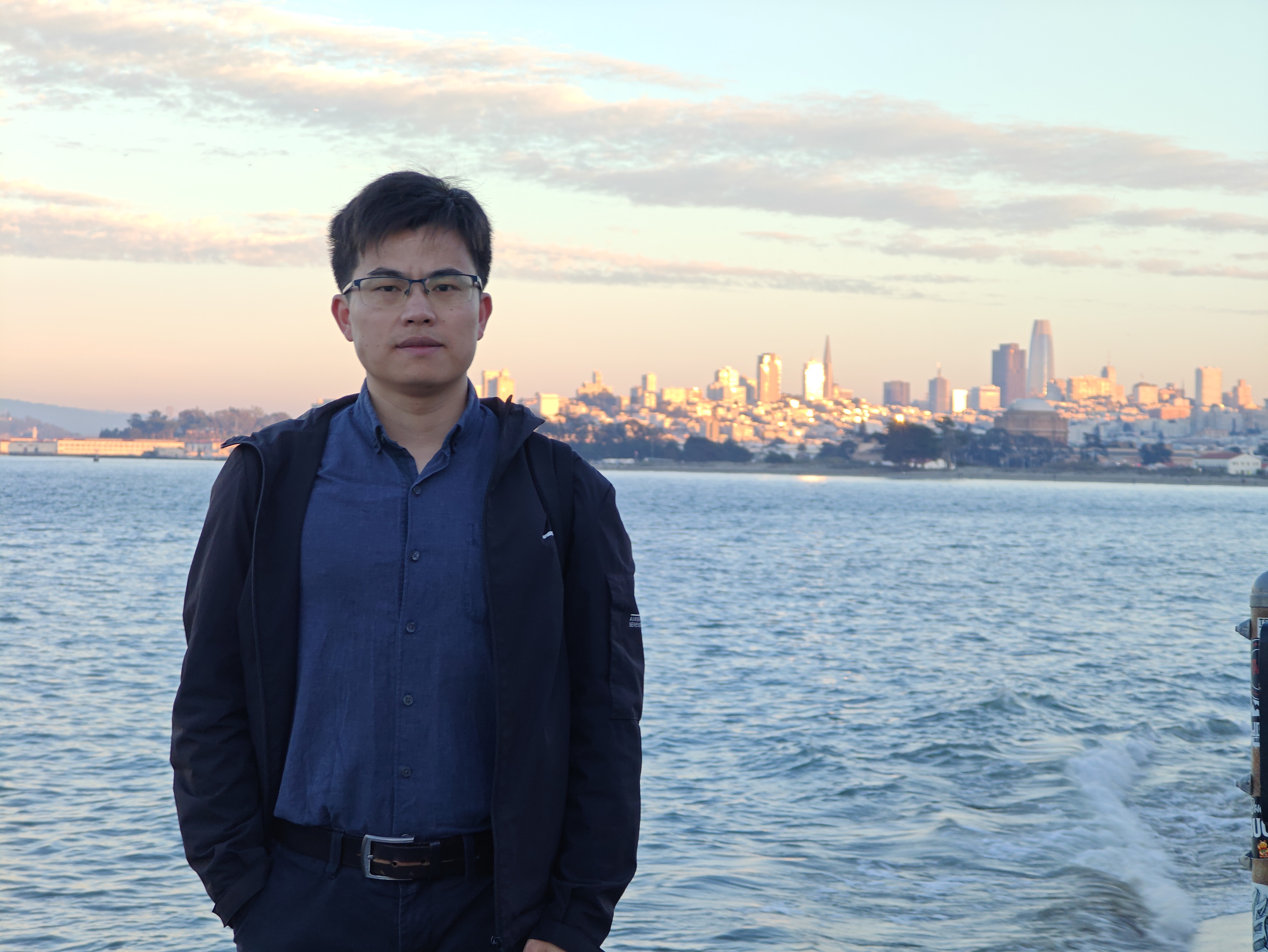
A photo during the American Geophysical Union (AGU) annual meeting 2023, San Francisco, USA.
Introduction
I am a current postdoc in the Seismology Lab at the Chinese University of Hong Kong (CUHK). Before that, my experience was:
2020-2024 PhD in the Department of Earth & Atmospheric Sciences, CUHK, under the Hong Kong PhD Fellowship Scheme
2017-2019 Marketing specialist in tp-link Malaysia & tp-link Russia
2014-2017 MS in geology in the School of Earth Sciences and Engineering, Nanjing University, China
2010-2014 BS in geology in the College of Earth Sciences, Zhejiang University, China
My researches incorporate seismology and geology to understand earthquake nucleation, fault behaviors, and induced earthquakes with improved strategies in high-resolution earthquake location. My current research area is the Weiyuan Shale Gas Field (WSGF) in the Sichuan Basin, China.
In this website, I will share my research, codes, tutorials, and other knowledge.
Research highlights
Structural constraints on induced earthquakes in the Weiyuan Shale Gas Field (WSGF)
Body-wave tomography was conducted to invert for 3D P&S velocities in the WSGF. Using refined velocity models, we relocated the earthquakes and analyzed the structural constraints on induced earthquakes. (Zi et al., 2023 Tectonophysics)
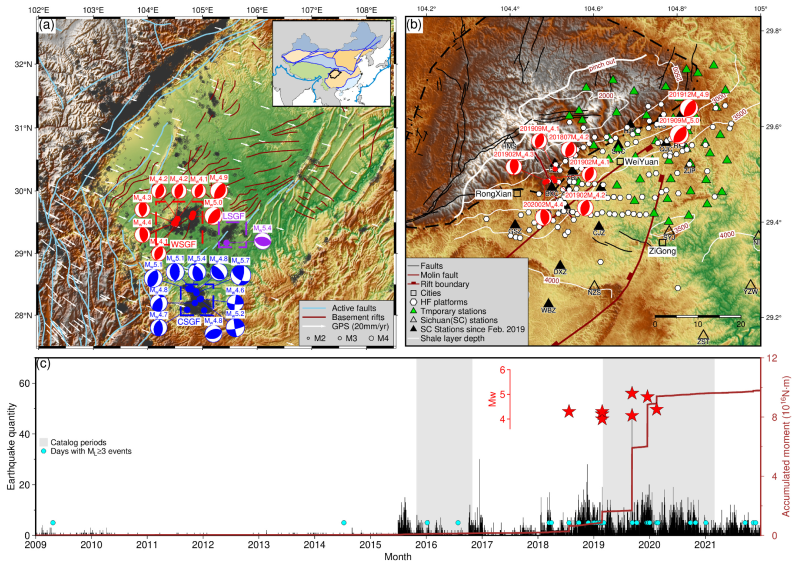
Background of the Weiyuan Shale Gas Field (WSGF) in the Sichuan Basin, China.
Dense array seismicity monitoring in Weiyuan Shale Gas Field (WSGF)
We deployed a dense array consists of 247 seismometers in WSGF in 2022 to monitor the seismicity in the area. The mean inter-station distance is ~3 km. During the six months of deployment, we recorded several tens thousand of earthquakes and found that the aftershocks of the 2019 \(M_L\) 5.6 earthquake persisted even after 3 years (Yang & Zi et al., 2025, Tectonophysics).
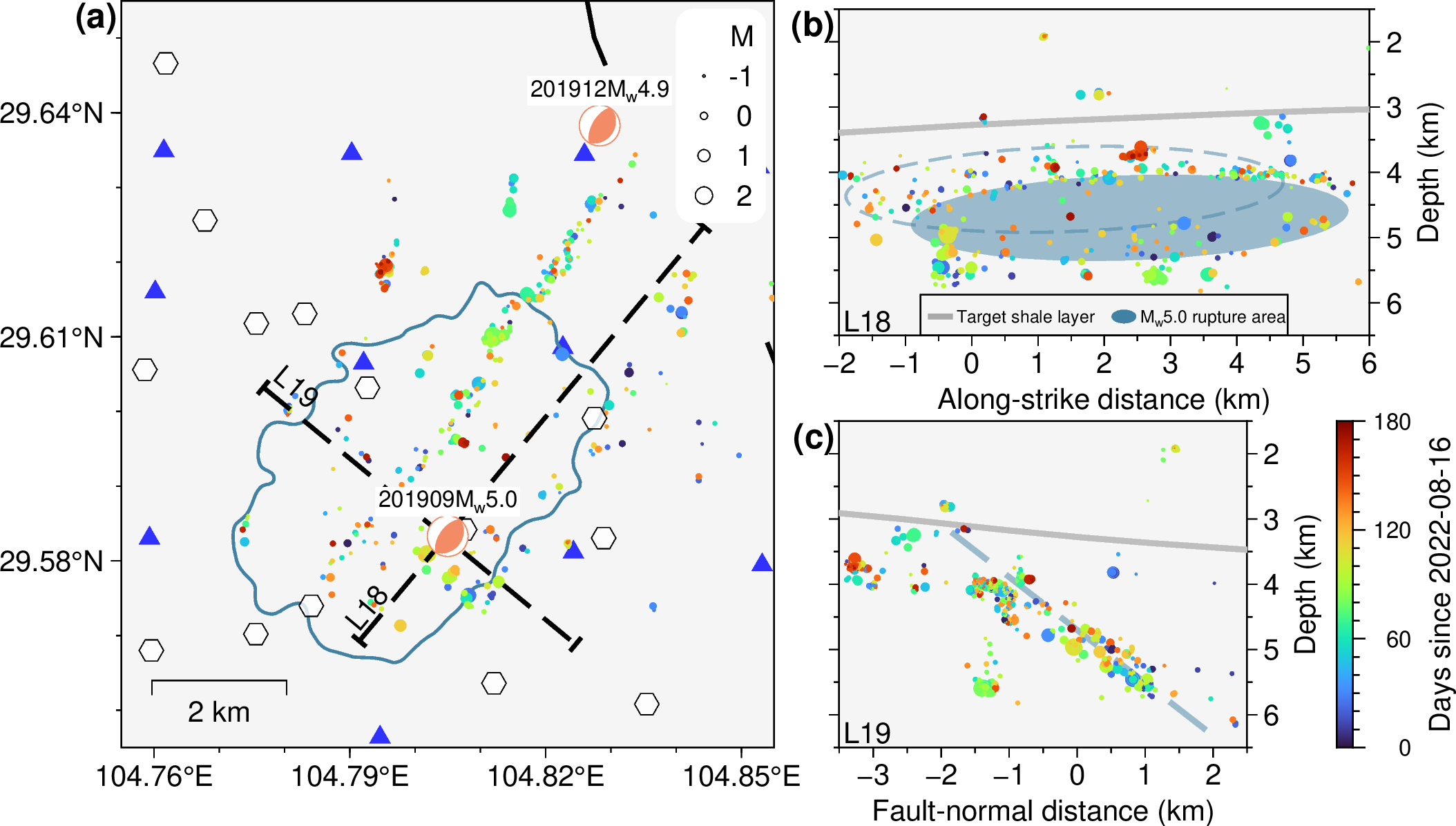
The 2019 \(M_L\) 5.6 earthquake and their aftershocks in 2022. The shaded zone in (b) represents the rupture area
Nucleation of an \(M_L\) 5.6 earthquake
Using near-fault seismometers, I study 11-month precursory foreshocks, the 6 minute immediate foreshocks,
and the seismic nucleation phase of the 2019 \(M_L\) 5.6
earthquake in the WSGF to understand earthquake nucleation behaviors, which is the first time that foreshocks and
seismic nucleation phase are observed in high-resolution (AGU 2024 poster).
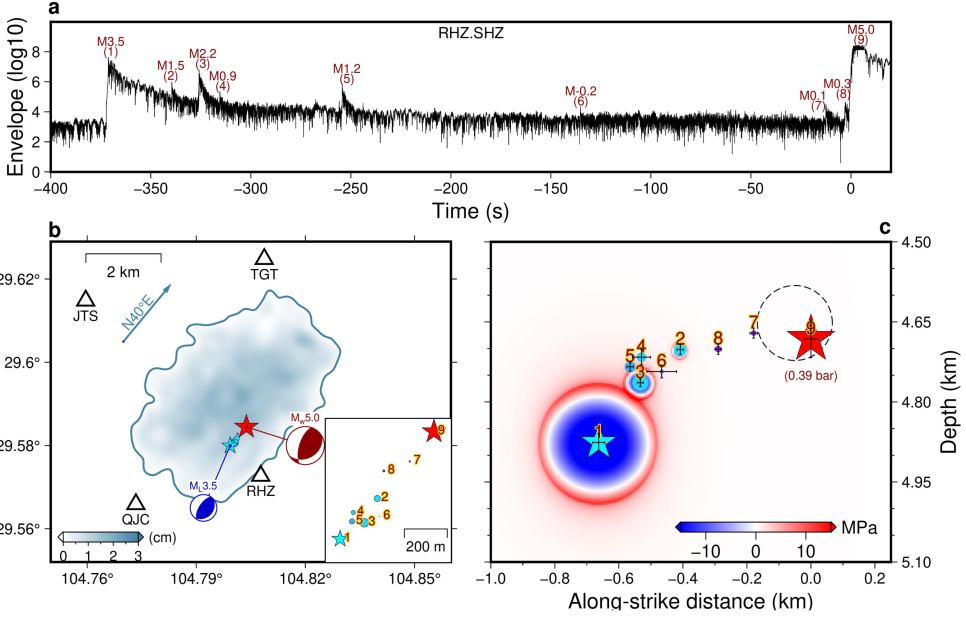
Nucleation of the 2019 \(M_L\) 5.6 earthquake in the WSGF. The immediate foreshocks are observed in high-resolution
The 11-month precursory fault activation of the 2019 \(M_L\) 5.6 earthquake in the WSGF
A long-term catalog (2015-2019) was produced and a 11-month precursory fault activation was observed prior to the deadly 2019 :math: M_L 5.6 Weiyuan earthquake triggered by hdraulic fracturing. The presence of the long activation window indicates observing precursory fault activation can be an effective way for hazard mitigation (Zi & Yang et al., 2025, CEE)

Approaching foreshock front to the mainshock during the 11-month precursory fault activation.
The python package seisloc
I developed a python package seisloc to address earthquake location and associated data processing.
It is designed in an object-oriented manner, which is easy to use and extend with substantial plot functions.
It is still under development.
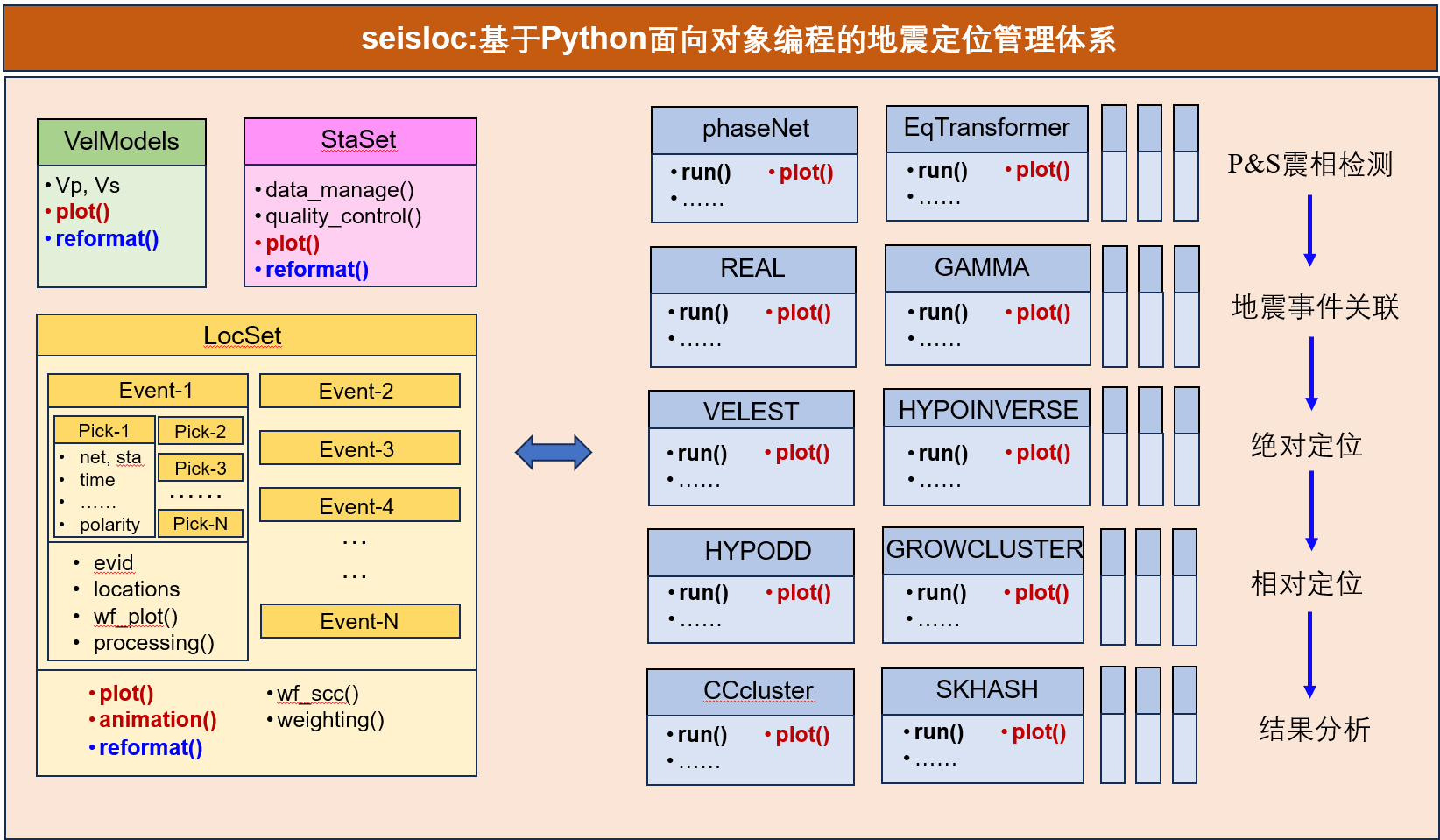
Design of the python package seisloc in a object-oriented manner.
Community efforts
I am passionate about team collaboration and efficiency, and I have mode significant progress in fostering community development. Several contributions are listed below:
Paper review: I served as a reviewer for Earh and Planetary Science Letters, Geophysical Journal of International, and Seismological Research Letters.
The GESS symposium: We organized the 1st Greater Bay Area Earth & Environmental Sciences Young Scholars Symposium (GESS) to encourage scientific communications of Young Scholars from institutions in and around Hong Kong (role: coordinator, more)
Time error solution: I addressed the issue of unstable time drifting problems in seismometer data in China, diagnosing the cause and developing a solution to recover accurate data after trial for months. The progress was shared at the China Geoscience Unition Annual Meeting 2023 (more).
Hydraulic fracturing (HF) platforms in WSGF: Locations of shale gas development platforms are essential but not available in the WSGF. By examining Google Earth images, approximately 140 HF platforms were identified. We further visited their sites to collect their names and fracking information. We shared collected dataset to the community in the supplementary of Zi et al., 2023
Tutorials: A series of tutorials were developed to guide readers in earthquake location and data processing.
Honours
Outstanding students award, The Chinese University of Hong Kong, 2024Best oral-presentation award, Habitable Earth - Geoscience for Sustainability (conference), 2023The HongKong Ph.D. Fellowship Scheme, 2020, The Chinese University of Hong KongOutstanding Worker - Class A, 2018Q2, tp-linkPostgraduate scholarship - Class A, 2014, Zhejiang UniversityNational Endeavor Fellowship, 2013, Zhejiang University
Geological Review, 63(4): 1040-1050(In Chinese with English Abstracts).
Fieldtrips
Aug. 2022. Temporary seismometers deployment in the Weiyuan Shale Gas Field
May. 2021. Temporary seismometers deployment in the Weiyuan Shale Gas Field
Apr. 2020. Temporary seismometers deployment in the Weiyuan Shale Gas Field
Mar. 2017. Neoproterozoic dikes investigation in the western Sichuan Basin
May. 2016. Geomagnetic samples pick-up in the northern Sichuan Basin
Sept. 2015. Picking rock samples for paleomagnetisation and U-Pb chronology in the southwestern Sichuan Basin